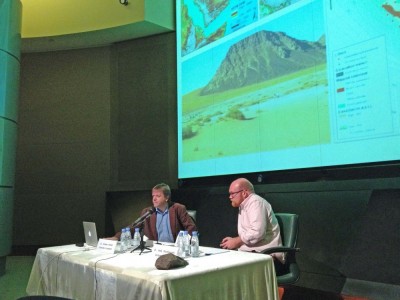Study of Saudi lithic collections at the National Museum Riyadh

Anthony Sinclair and Andy Shuttleworth visited the National Museum Riyadh from 30th October to 13th November and successfully completed study of the material recovered from the January 2015 survey, especially the rich material from Wadi Dabsa.
All the lithic material collected in recent years by DISPERSE Palaeolithic surveys in the Jizan and Asir Provinces of Southwest Saudi Arabia has previously been stored and studied at the Sabiya Museum, Jizan. During the course of this year, the Saudi Commission for Tourism and National Heritage agreed to transport all the finds to the store rooms of the National Museum in Riyadh in order to make them more easily accessible for systematic analysis and to facilitate the participation of Saudi students and colleagues in their study.
The Wadi Dabsa material is one of the largest concentrations of Palaeolithic stone tools that we have so far discovered in the region. It includes approximately 1000 pieces collected from the banks of what was once a shallow lake at the Wadi Dabsa. Materials include classic Acheulean tools with hand axes, cleavers and large cutting tools as well as an extensive range of pieces illustrating prepared core technologies from the collection of raw materials through to the hafting of point forms. Of particular interest is the clear evidence for individuals learning to make stone tools at this locality working alongside much more skilled knappers, a pattern observed amongst modern humans much later in time.
In addition to study of the material, Anthony and Andy also gave a series of workshops in the analysis of lithic technology to curating staff in the Museum, culminating with a public lecture on 12th November on the Early Prehistory of Saudi Arabia. The accompanying image shows Anthony (on the left) and Andy at the lecture.






